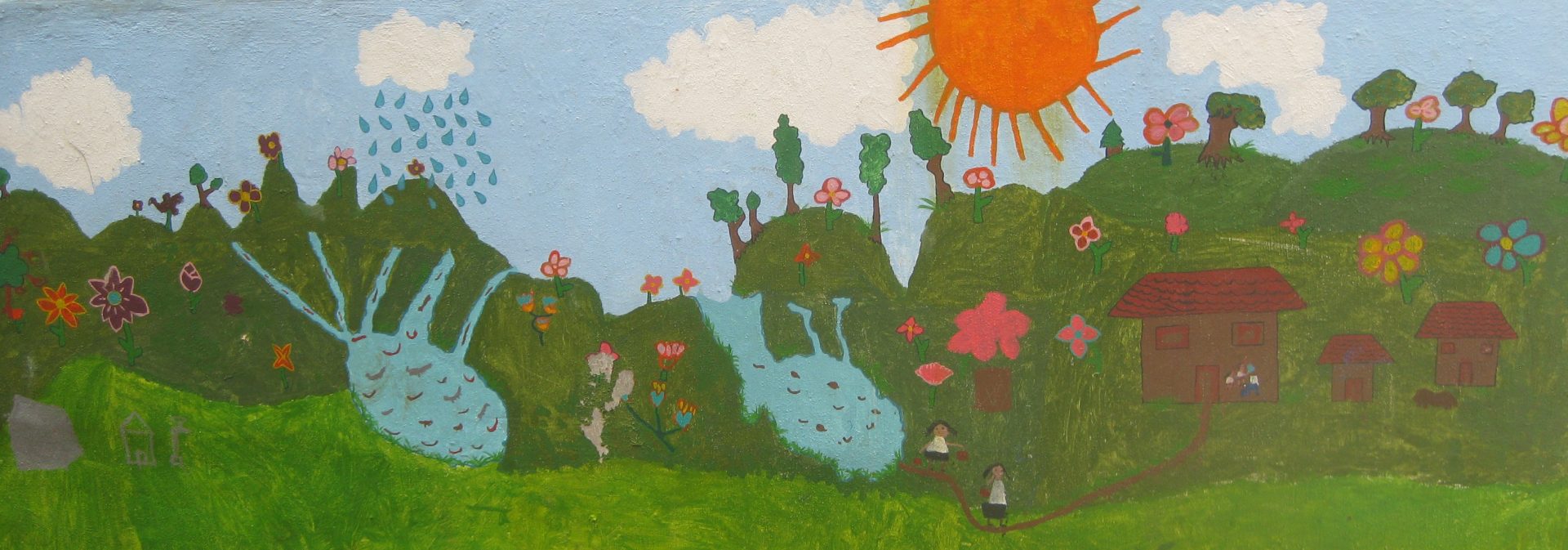Since I last wrote a blog, I have spent a lot more time in the lab here working with flocculation agents. I wrote a whole blog post about the science and then realized that was not super interesting, so I’m starting with the fun stuff!
Last week, all five of us went to Tonina, an archaeological zone and site of Mayan ruins. I was glad to be able to make this trip after missing the trip to Palenque, and the site did not disappoint. We took a tour of the ballgame court, and climbed five of the seven levels of the central pyramid (the top two are being renovated). I really enjoyed seeing different parts of the architecture, and was amazed by how well it all has held up since being abandoned in 910 CE. We stopped at a waterfall, El Corralito, on the way back, but pictures don’t do it justice.




The day after, we went to El Arcotete, an ecopark located just outside San Cris, about a 20-minute colectivo ride away. There was a lot to do, including ziplining (which I did not partake in), but the highlight for me was the grutas (caves).




A rock formation that kind of looks like an upside-down Spider-Man
Next up, a fruit update!
Last week, I tried the guaya (Spanish lime), which tastes kind of like a mix between a lychee and a lime. I’m a big fan, and will definitely miss these. I also tried pitaya (dragonfruit) — I’m usually not a huge fan of dragonfruit with its very mild flavor and deceptively colorful peel, but the varieties here have been better than what I’ve had before. I’m sad to say that I haven’t seen any more new fruit since guaya, but I’ve been told that July is peak fruit season so I’ll keep looking.

On a sidenote, I’ve taken an interest in the street art here in San Cris, and am working on a project about it for my summer class in the PJHC minor. I’ve been setting up interviews with local street artists, and I’m excited to learn more about art’s influence on the city.


Some notable street art I’ve seen while walking around
Now for the science:
I started flocculating with aluminum sulfate (alum), the typical chemical agent used to coagulate particles in water.
After finding the optimal concentration (around 0.1g/L), I started comparing alum to Moringa seed powder. Yifei and I had to try four or five different seed stalls at El Mercado Viejo, but we finally found Moringa seeds. After buying the seeds, I used a mortar and pestle to grind the seeds into powder — except Héctor and I couldn’t find the pestle, so I used a broken screwdriver (it works! what more could I want?).
The initial trials comparing Moringa to alum were promising: after four days of treatment, the sample with 0.1g/L Moringa had a 95% reduction in turbidity, while the alum sample had a 92% reduction. At this timescale though, even sedimentation alone (no treatment) did pretty well, at a 91.7% turbidity reduction.


Initial 96 hours later
I figured that Moringa and alum may be faster-acting, so I tried treating for 1-2 days, instead of four. These results supported the ones above, with the Moringa and alum samples both at around a 95% reduction in turbidity, and the sample without treatment at only 79%.
Next, I tried increasing the concentration of Moringa from 0.1g/L to 0.2-0.3. These results were not as promising as the first trial. All samples with Moringa, at any concentration, performed at least 10% worse than alum. However, all Moringa samples were still 20% better in turbidity reduction than sedimentation alone, so I was content to try again.
Then, earlier this week, Héctor taught me how to conduct a microbiological analysis, which indicates the presence of coliform bacteria through color, and E. Coli through fluorescence. The scientific literature indicated that Moringa seed powder actually had antimicrobial properties, while alum did not do much.
Yesterday, I checked the microbiological results, and I was quite surprised.

Microbiological results after 24 hours — yellow indicates coliform bacteria, black sharpie indicates E. Coli
When I first opened the incubator, I thought that the two clear trays on the left were the high concentrations of Moringa, and then the yellow trays were the rest.
I was wrong.
Ironically, the tray with no treatment (far-left) fared the best in terms of limiting bacterial growth, while the Moringa trays had high levels of bacteria. I guessed that this might be because bacteria fed on the nutritional components of the seeds, and found an academic article that had the same results and explanation.
After that unpleasant surprise, I did a little digging to find how to limit bacterial growth, and found some lipid extraction methods that may help. I currently have some trays in the incubator, so fingers crossed that I get some different results than before.
That’s all from me for now — I hope to have a flocculation update (with good news) next week!

Great post, combining fun & work! I am so jealous of all the places you all are getting to see! It’s also great to read about your experiences with flocculation, thank you for writing about them after all! If you cannot find the pestle and get tired of the screwdriver, buy a molcajete at the market… Your experience with Moringa is very similar to what we’ve observed at Rice.